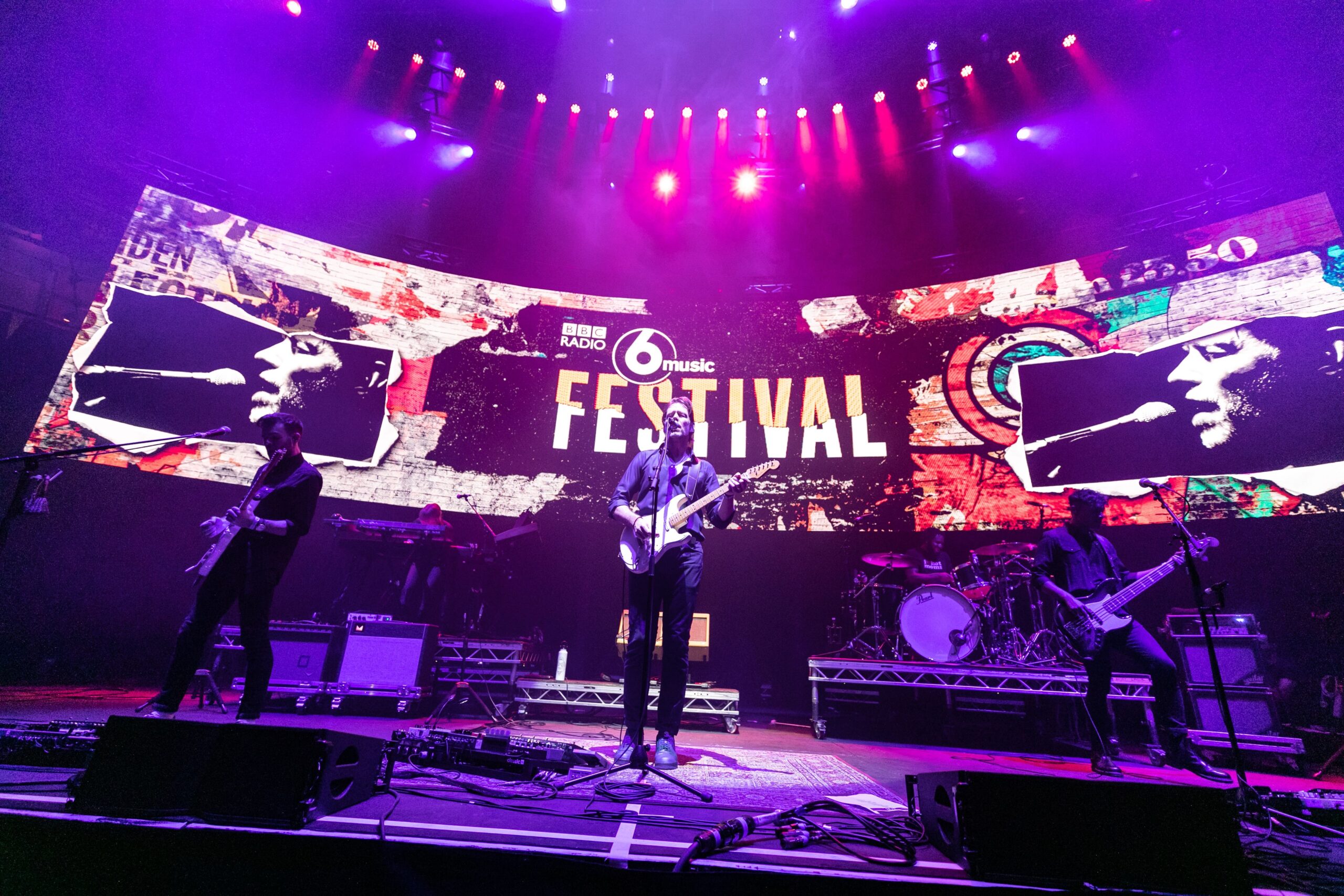
By: Chris Lever/Shutterstock
When it comes to a band as versed as Radiohead — whose fifth album Amnesiac turns 20 years old today — it’s nearly impossible to imagine the sheer quantity of all their recorded material.
Much to the appeal of diehards, the British alt-rock legends have made their intimidatingly expansive history a little easier to parse. In January 2020, they launched the Radiohead Public Library, an infinite-scroll database filled with virtually every TV performance, newly-reissued merchandise, iconic live shows, B-sides, music videos, and plenty more. It’s all neatly sorted by studio album, making it easy for fans to fully dive into their favorite era. But, for those not in the loop, the Radiohead Public Library might make getting into the band even more daunting.
Never fear, because we’ve mapped out a guide for each era of Radiohead, so you can more accurately pinpoint where to start.
Grunge Radiohead: 1992-1995
The instant success of Radiohead’s first big single — the self-loathing “Creep” — had naysayers thinking they’d be one-hit wonders from the get-go. However, with Pablo Honey and its infinitely better follow-up, The Bends, Thom Yorke and company had made themselves crucial players in the typical grunge-rock scene indicative of the ’90s. Much to their chagrin, Radiohead haven’t been able to shake off the ubiquity of “Creep” — they very rarely perform it live, despite it remaining their highest-charting single — but little did fans know at the time that the band was fated to change the shape of rock to come.
Crossover Radiohead: 1997
If you listen to one Radiohead album in your lifetime, make it OK Computer. Widely regarded as their best record — even among the best of all time by any artist — OKC was still rooted in Britpop and post-grunge but revealed a band more interested in experimentation, dense song structure, and diverting from the norm. Tracks like the stadium-sized “Paranoid Android” featured a computerized voice, while more haunting numbers like “Climbing Up the Walls” reached sonic depths that’d be imitated, but never expertly replicated, for years to come.
If that’s not enough, check out the OKNOTOK White Cassette, an 80-minute run of bonus material included in the deluxe version of OKC‘s 20th-anniversary reissue. It’s not nearly as tidy as what would be the final product, but it’s an enthralling look at the spellbinding beginnings of Radiohead staples.
Electro-Radiohead: 2000-2001
Expanding on the electronic influences teased by OK Computer, 2000’s Kid A proved Radiohead wasn’t just a rock band anymore. Inspired by the ambient and techno of artists like Aphex Twin, Yorke put his minimal piano skills to the test with tracks like “Everything In Its Right Place.” To combat the writer’s block he faced when trying to write on guitar, he also taught himself the ins and outs of electronic instruments like a vocoder and Moog Rogue keyboard. While there are clear moments of a blissed-out tranquility — such as the wordless “Treefingers” — the album isn’t always so calm. “Idioteque” is driven by a thudding beat inspired by club music, while “The National Anthem” utilizes a horn section to create a sense of chaos.
Kid A was recorded during the same sessions as its follow-up, Amnesiac. Although the latter doesn’t always bear the same profundity, there are still standouts like “Like Spinning Plates,” “Life in a Glasshouse,” and the anti-government “You and Whose Army?” Appropriately, Amnesiac feels like a steady stream of dark thoughts that keep you up all night.
Back-to-Rock Radiohead: 2003-2007
The first moments of Hail to the Thief show Radiohead inching back towards square one, which is to say, it’s very much a guitar record. But Hail to the Thief and the subsequent In Rainbows laid the blueprint for rock music on Radiohead’s own terms; both albums still brought the artistic flair and idiosyncrasies fans adored. Just take the 5/4-time-signature shuffle of “15 Step,” or the disorienting loop that drives “Backdrifts.” Thankfully, they didn’t try to make another OK Computer, instead figuring out their own ways to make different types of rock music.
Modern Radiohead: 2011-now
Radiohead’s last two studio albums, The King of Limbs and A Moon Shaped Pool, often feel more in line with Kid A‘s hypnotic electronica, a theme that can also be heard clearly on Yorke’s solo material. These days, they’ve slowed down a bit as a band altogether, although most of the members have been busy in other endeavors. In addition to Yorke’s three solo albums, he also composed the score for Luca Guadagnino’s Suspiria. Guitarist Jonny Greenwood has composed for a multitude of films, nabbing an Academy Award nomination for his Phantom Thread score. Drummer Philip Selway has dabbled in his own solo work and writing film scores, as well.
Time and time again over the course of nearly three decades together, Radiohead have proven themselves to be one of the greatest bands of all time — rock or otherwise. With all their shapeshifting throughout the years, they’ve become as enigmatic as they are iconic.
- Bill Gates Finally Getting Into Radiohead’s Kid A ›
- How Thom Yorke Learned to Stop Worrying and (Mostly) Love Rock … ›
- How Radiohead Fell Victim to What ‘OK Computer’ Predicted 20 … ›
- The Best Radiohead Songs: All 158 Tracks, Ranked ›
- Radiohead’s corporate empire: inside the band’s dollars and cents … ›
- Help I want to get into Radiohead but : radiohead ›
- The Guide to Getting Into Radiohead – VICE ›













